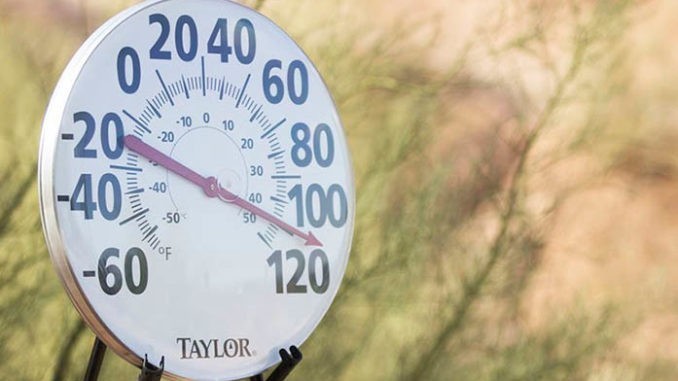
A bureaucratic practice of recording temperatures using nonexistent stations is fueling the climate change narrative.
“Ghost stations” refer to nonexistent stations from the U.S. Historical Climatology Network (USHCN). The National Oceanic and Atmospheric Administration (NOAA) relies on UHSCN stations to determine national and regional-scale temperatures, one member of NOAA’s Cooperative Observer Program (COOP) Network.
Arizona has over a dozen.
For these ghost stations, USHCN interpolates temperatures from “nearby” stations (proximity is variable, and can be dozens of miles or more away). That’s a problem according to climate critics like John Shewchuk, a meteorologist with a significant portion of his career spanning the Air Force where he attained the rank of lieutenant colonel.
A problem because the interpolated temperature data can be sourced from spots prone to inaccurate temperature readings due to factors like the heat island effect, where areas become hotter at the surface level due to the heat retention and reflection of certain infrastructure.
Shewchuk has devoted himself to finding and documenting the UHSCN ghost stations nationwide. The exact number of ghost stations isn’t public knowledge. They arise due to aging equipment and retiring personnel. Shewchuk has documented nearly 200 across the country so far of the nearly 400 USHCN ghost stations.
There are over 1,200 USHCN stations nationwide.
I've so far documented 196 ghost stations where NOAA fabricates temperatures for data recording stations that no longer exist. There are many more yet to document. Find them at #NOAAghoststation pic.twitter.com/Pn6IRmu8xB
— John Shewchuk (@_ClimateCraze) November 6, 2025
So far, Shewchuk has posted about seven ghost stations in Arizona.
The latest ghost station to be reported on by Shewchuk in Sacaton offers temperature data from a spot in the middle of a heat island of parking lots and buildings.
Even Sacaton, AZ has a ghost station: USHCN No. 27370, where a once rural temperature observation station is now surrounded by hot parking lots and hot buildings … and yet NOAA continues by fabricating its temperature data. #NOAAghoststation #189 pic.twitter.com/GJUFjg83wJ
— John Shewchuk (@_ClimateCraze) August 23, 2025
The one in Whiteriver also conflicts with NOAA guidelines on temperature recording, per Shewchuk. The ghost station provides temperatures about 25 feet from parking lot pavement. NOAA requires temperature recording to take place at least 100 feet from pavement.
The independent data tracking website “NOAA Crappy” has documented 15 ghost stations in Arizona: Buckeye, Chandler, Childs, Flagstaff, Grand Canyon Village, Holbrook, Kingman, Lees Ferry, Miami, Sacaton, Sunsites, Tucson, Whiteriver, Wickenburg, and Yuma.
In response to concerns over UHSCN ghost stations, NOAA conceded the UHSCN sites were subjected to poor exposure.
However, the agency defended the data as being within an allowable mean bias “consistent with previously documented changes” following USHCN conversion to electronic sensors over the last quarter-century. NOAA also said the temperatures align with measurements from others within the U.S. Climate Reference Network.
“This network was designed with the highest standards for climate monitoring and has none of the siting and instrument exposure problems present in USHCN,” stated NOAA. “The close correspondence in nationally averaged temperature from these two networks is further evidence that the adjusted USHCN data provide an accurate measure of the U.S. temperature.”
Shewchuk countered to the Epoch Times that NOAA diminishing the importance of USHCN data as one in a mix of network temperature suppliers glossed over the fact that USHCN is the only entity that can provide climate change context since it is the only one that has provided over 100 years of data.

There need to be Trump loyal people looking this data over, especially in AZ (full of McCain traitors). Who at the Agency is defendign this and when were they hired?
whats this called ‘Ghost Busters’
betts, did you attend government schools?